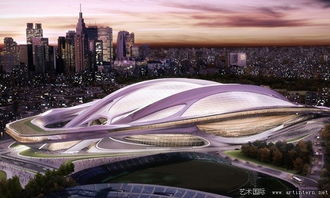体育馆工程施工组织设计方案
Title: Designing a Modern Sports Arena: Key Considerations and Best Practices
Creating a stateoftheart sports arena involves a meticulous blend of architectural innovation, engineering prowess, and functional design principles. Whether conceptualizing a multipurpose facility or a specialized venue for a specific sport, several key factors must be considered to ensure optimal user experience, safety, and operational efficiency.
1. Site Selection and Planning:

Selecting the right location is paramount. Consider proximity to transportation hubs, parking facilities, and the surrounding infrastructure. Conduct thorough site surveys to assess topography, soil conditions, and environmental impact. Additionally, zoning regulations and community engagement are crucial aspects to address during the planning phase.
2. Functional Layout and Spatial Design:
The layout should be intuitive, maximizing spectator comfort and athlete performance. Segregate public, athlete, and administrative spaces efficiently. Incorporate ample circulation areas, concession stands, restrooms, and VIP lounges. Ensure unobstructed sightlines from every seat, adhering to accessibility standards.
3. Structural Engineering and Safety Measures:
Engage experienced structural engineers to design a robust framework capable of withstanding dynamic loads and natural forces. Implement stringent safety measures, including fire suppression systems, emergency exits, and crowd control mechanisms. Comply with relevant building codes and standards to guarantee the wellbeing of occupants.
4. Acoustic and Lighting Design:
Optimize acoustics to enhance the spectator experience and facilitate clear communication. Employ soundabsorbing materials, strategic speaker placement, and digital sound processing technologies. Integrate adaptable lighting solutions to accommodate different events and broadcasting requirements while minimizing glare and shadows.
5. Sustainability and Energy Efficiency:
Embrace sustainable design principles to minimize environmental impact and operating costs. Incorporate renewable energy sources, such as solar panels and wind turbines, to supplement power consumption. Employ energyefficient HVAC systems, LED lighting, and watersaving fixtures to reduce resource utilization.
6. Technological Integration:
Integrate cuttingedge technologies to elevate the spectator experience and streamline operations. Deploy highdefinition video displays, immersive audio systems, and wireless connectivity throughout the facility. Implement digital ticketing, wayfinding apps, and cashless payment solutions to enhance convenience and security.
7. Flexibility and Adaptability:
Design the arena to accommodate diverse events beyond traditional sports competitions, such as concerts, conferences, and cultural performances. Incorporate flexible seating configurations, removable partitions, and modular amenities to adapt to varying requirements seamlessly.
8. Maintenance and LongTerm Viability:
Develop a comprehensive maintenance plan to preserve the facility's aesthetics, functionality, and value over time. Regular inspections, preventive maintenance tasks, and scheduled upgrades are essential to prolonging the arena's lifespan and ensuring continued user satisfaction.
Conclusion:
Designing a modern sports arena is a multidisciplinary endeavor that demands meticulous planning, innovative thinking, and a commitment to excellence. By addressing key considerations such as site selection, functional layout, safety measures, sustainability, technology integration, and longterm viability, architects and engineers can create iconic venues that inspire and endure for generations to come.
[Your Name/Company Name]
This HTML layout is structured to provide a comprehensive guide to designing a modern sports arena, covering various aspects from site selection to maintenance. Let me know if you need any adjustments or additional information!


